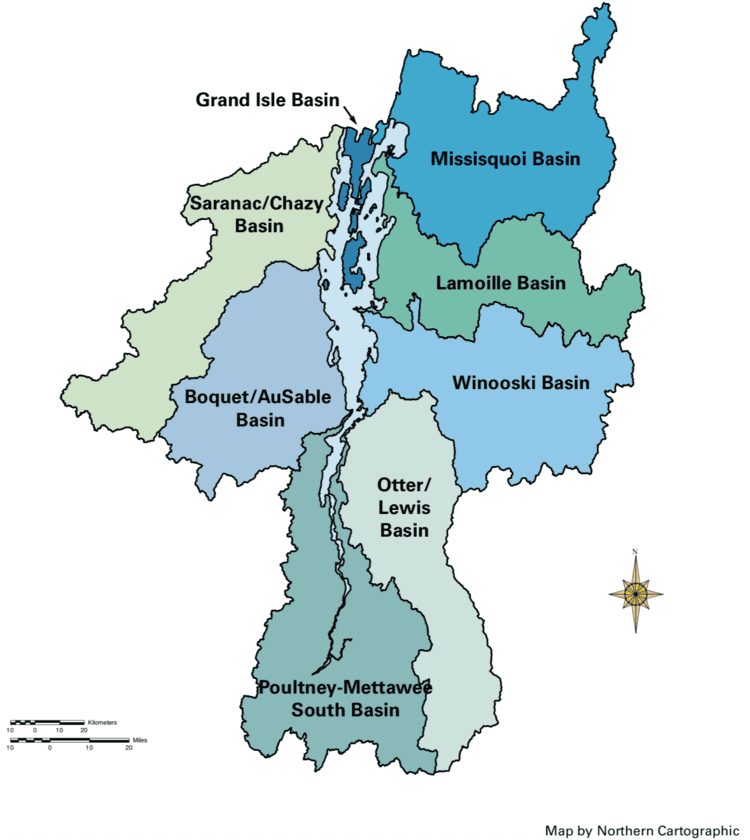 The Champlain Basin Program (LCBP) has released the 2024 State of the Lake and Ecosystem Indicators Report. Drawing on the most recent scientific data, the report provides a comprehensive assessment of the condition of Lake Champlain.
The Champlain Basin Program (LCBP) has released the 2024 State of the Lake and Ecosystem Indicators Report. Drawing on the most recent scientific data, the report provides a comprehensive assessment of the condition of Lake Champlain.
The report documents ongoing challenges and recent successes in the management of the lake’s water quality and ecosystem. Produced every three years, the report reflects the most current scientific data and resource management approaches. The report’s Ecosystem Indicators Scorecard provides the status and trend for key water quality and ecosystem parameters.
The impacts of climate change are among the greatest challenges. The lake—which froze over nearly every year in the past—now freezes once every five years and is expected to freeze over just once per decade by 2050.
More frequent and intense rainstorms like those experienced in the Lake Champlain Basin in 2023 will likely cause increased erosion and nutrient loading to the lake. Warmer air and lake temperatures work against efforts to reduce the occurrence of cyanobacteria blooms, which continue to close beaches on the hottest summer days.
Despite these challenges, water quality monitoring on the lake provides hope in some areas that historically have been problematic. For example, while still higher than the target, phosphorus concentrations in Missisquoi Bay show a general downward trend since 2018.
The report includes several other positive findings on clean water and ecosystem health. Mercury levels in all monitored sport fish have returned to a downward trend, after an upward trend observed in the 2018 report.
Atlantic salmon are native to Lake Champlain and prized by anglers, but wounding by sea lamprey has contributed to population declines. Wounding rates have been below targeted limits for the last three years, improving the viability of restoration efforts.
No new aquatic invasive species (AIS) have been documented since 2018, despite threats from AIS in surrounding waterbodies. The round goby, an aquatic invasive of particular concern, is “on the doorstep” of Lake Champlain. Partners throughout the basin are working proactively to prevent its introduction to the basin.
A healthy Lake Champlain relies on communities that have the capacity to implement programs to protect the Basin’s resources and individuals who are involved as stewards of the Lake. The 2024 State of the Lake reports that residents are aware of water quality challenges and prioritize clean water in their communities, but more work is needed to transform awareness into action.
New programs that provide free access to recreation and cultural resources are increasing enjoyment of the lake and participation in its management. Multilingual outreach and messaging are helping to better inform members of diverse communities about fishing regulations, water quality, and human health.
The report follows the framework of the LCBP’s management plan Opportunities for Action, which defines the following four goals: Clean Water, Healthy Ecosystems, Informed and Involved Public, and Thriving Communities. It is informed by the expertise of dozens of scientific and resource management partners.
Free copies of the 2024 State of the Lake Report are available by calling the Lake Champlain Basin Program at (802) 372-3213. An electronic version may be found at sol.lcbp.org. A French version of the full document will be posted online in late June.
Illustration: Lake Champlain Basin Program Coverage Area Map (provided).


